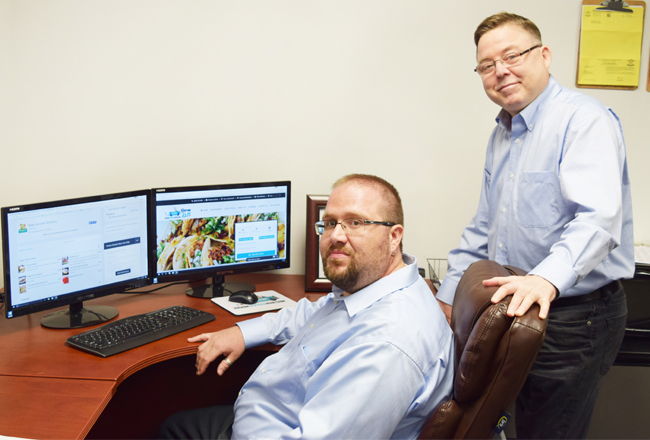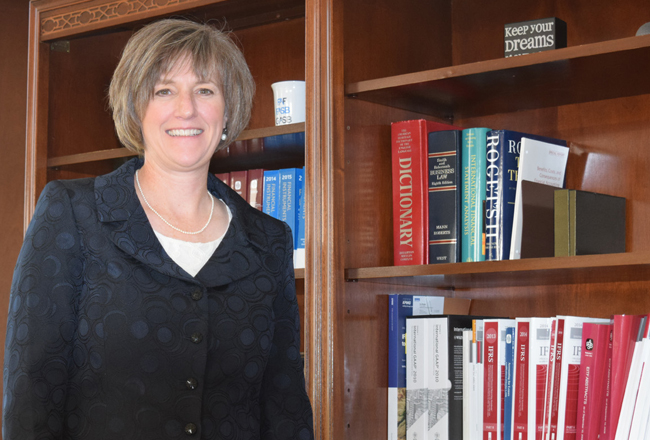With the Treasury Department”™s decision last month to phase out its “myRA” program, area financial advisors are ramping up efforts to help those who enrolled in it to find alternative ways of saving for their retirement.
Those who bothered with myRA in the first place, that is.
“That the government took some initiative in this area is a good thing,” said Richard W. Rausser, senior vice president of client services at Pentegra Retirement Services, headquartered in White Plains with an office in Shelton. “That it didn”™t work out is a shame.”
Launched in 2014, myRA ”“ short for “My Retirement Account” ”“ was created to help low- to middle-income earners start saving for retirement. A no-fee, no-minimum balance, non-deductible Roth IRA for individuals without an employer-sponsored plan like a 401(k) ”“ who had incomes below $131,000 and couples with incomes under $193,000 — it allowed savers to contribute up to $5,500 per year (up to $6,500 for those 50 or older).
Funds were invested only in a new United States Treasury retirement savings bond, which was guaranteed to never lose money ”¦ but paid well below what a typical stock-based fund might, with a recent rate of just 2.25 percent. The maximum that a participant could keep in a myRA was $15,000.
“Unfortunately, there has been very little demand for the program, and the cost to taxpayers cannot be justified by the assets in the program,” said U.S. Treasurer Jovita Carranza in announcing its closure.
The numbers bear Carranza out. Just 30,000 myRA accounts were opened in its three years of existence, with a total of $34 million invested ”“ and zero invested in 10,000 of those accounts.
It has cost $70 million to manage the program ”” including server costs and promotion ”” and would likely have cost an additional $10 million annually going forward, the Treasury said.
“From a cost/benefit perspective, it just didn”™t work,” Rausser said.
According to a 2016 GOBankingRates survey, 35 percent of all adults in the U.S. have only several hundred dollars in their savings accounts, and 34 percent have zero savings. About half of U.S. families have no retirement account savings, according to the nonprofit Economic Policy Institute.
The myRA effort “relied on individuals to take action ”“ but this unfortunately proves that most individuals are likely to take no action,” Rausser said.
Although no data was available on how many Fairfield County residents are in that underfunded boat, banks say they are stepping up efforts to aid those who had been relying on myRA.
“Our FutureTrack program can help them transition to a qualified retirement account,” said Marlene Piche, head of branch banking/senior vice president at Danbury-based Union Savings Bank. “The key is to work with people on an individual basis, to determine what their goals are and establish a realistic budget.”
Restructuring debt is a top priority, she said. “We start with the debts that have the largest interest rates and manage them down to allow them to make contributions ”“ or, hopefully, additional contributions ”“ to a retirement fund.”
Short-term savings programs can help establish an automatic savings investment strategy, Piche said. “There are various tips and tricks we can use, so that they don”™t feel the pinch at the start.” Typically that can involve setting aside as little as $5 a week, she said, with a goal of increasing that to $25 a week after 12 months.
Patriot Bank, based in Stamford, Newtown Savings Bank, Bankwell in New Canaan and others all offer retirement savings accounts, and are equally willing to step up with creative solutions for those who have suddenly found themselves without access to a myRA.
“Those with existing myRA accounts can transfer their assets to another retirement account at a local bank, a service that Patriot can provide,” affirmed Patriot President Richard Muskus, Jr. “Our bankers can help account holders consider the best alternatives given their individual financial situations.”
Muskus noted that the Treasury Department is advising myRA enrollees transfer their money to a Roth IRA. Mutual funds and bonds can also be prudent investments.
And of course all financial institutions recommend taking advantage of their employer-sponsored 401(k) if they can. “Most employers have some sort of ”˜matching”™ plan,” Piche said. “If you can save 5-6 percent of your salary each year in a 401(k), and the employer matches that contribution, you”™ve hit a home run,” she
With the U.S. Treasury Department”™s decision last month to phase out its “myRA” program, area financial advisers are ramping up efforts to help those who enrolled in it to find alternative ways of saving for their retirement.
Those who bothered with myRA in the first place, that is.
“That the government took some initiative in this area is a good thing,” said Richard W. Rausser, senior vice president of client services at Pentegra Retirement Services, headquartered in White Plains with an office in Shelton. “That it didn”™t work out is a shame.”
Launched in 2014, myRA ”” short for My Retirement Account – was created to help low- to middle-income earners start saving for retirement. A no-fee, no-minimum
balance, nondeductible Roth IRA for individuals without an employer-sponsored plan such as a 401(k), it allowed savers to contribute up to $5,500 per year or up to $6,500 for those 50 or older. The
retirement plan was limited to persons with annual income below $131,000 and
to couples with annual incomes under $193,000.
Funds were invested only in a new Treasury retirement savings bond, which was guaranteed to never lose money, but paid well below what a typical stock-based fund might, with a recent interest rate of just 2.25 percent. The maximum that a participant could keep in a myRA account was $15,000.
“Unfortunately, there has been very little demand for the program and the cost to taxpayers cannot be justified by the assets in the program,” said U.S. Treasurer Jovita Carranza in announcing its closure.
The numbers bear Carranza out. Just 30,000 myRA accounts were opened in its three years of existence, with a total of $34 million invested ”” and nothing invested in 10,000 of those accounts.
It has cost $70 million to manage the program, including server costs and promotion and would likely have cost an additional $10 million annually going forward, the Treasury Department said.
“From a cost-benefit perspective, it just didn”™t work,” Rausser said.
According to a 2016 GOBankingRates survey, 35 percent of all adults in the U.S. have only several hundred dollars in their savings accounts and 34 percent have zero savings. About half of U.S. families have no retirement account savings, according to the nonprofit Economic Policy Institute.
The myRA effort “relied on individuals to take action, but this unfortunately proves that most individuals are likely to take no action,” Rausser said.
Although no data was available on the number of Fairfield County residents with underfunded savings accounts, banks said they are stepping up efforts to aid those who had been relying on myRA.
“Our FutureTrack program can help them transition to a qualified retirement account,” said Marlene Piche, head of branch banking and senior vice president at Danbury-based Union Savings Bank. “The key is to work with people on an
individual basis, to determine what their goals are and establish a realistic budget.”
Restructuring debt is a top priority, she said. “We start with the debts that have the largest interest rates and manage them down to allow them to make contributions ”” or, hopefully, additional contributions ”” to a retirement fund.”
Short-term savings programs can help establish an automatic savings investment strategy. “There are various tips and tricks we can use so that they don”™t feel the pinch at the start,” said Piche. Typically, that can involve setting aside as little as $5 a week, she said, with a goal of increasing that to $25 a week after 12 months.
Patriot Bank, based in Stamford, Newtown Savings Bank, Bankwell in New Canaan and others all offer retirement savings accounts and are equally willing to step up with creative solutions for those who have suddenly found themselves
without access to a myRA.
Patriot Bank President Richard Muskus Jr. noted that the Treasury Department is advising myRA enrollees to transfer their money to a Roth IRA. Mutual funds and bonds can also be prudent investments.
Retirement savers also can take advantage of employer-sponsored 401(k) plans. “Most employers have some sort of matching plan,” in which employee paycheck contributions to a plan are fully or partially matched by the employer, Piche said. “If you can save 5 to 6 percent of your salary
each year in a 401(k) and the employer matches that contribution, you”™ve hit a home run.”
When saving for retirement, “There can be pitfalls with fees and expenses,” said Rausser, “but talking with a financial adviser is always recommended.”
Online calculators and the Social Security website also can help savers decide what they realistically need to live comfortably in retirement, he said.
said.
“You have to save for, or keep saving for, retirement,” Rausser said. “There can be pitfalls with fees and expenses, but talking with a financial advisor is always recommended.”
Online calculators, and the Social Security website, can help savers decide what they realistically need to live comfortably in their golden years, he added.




















